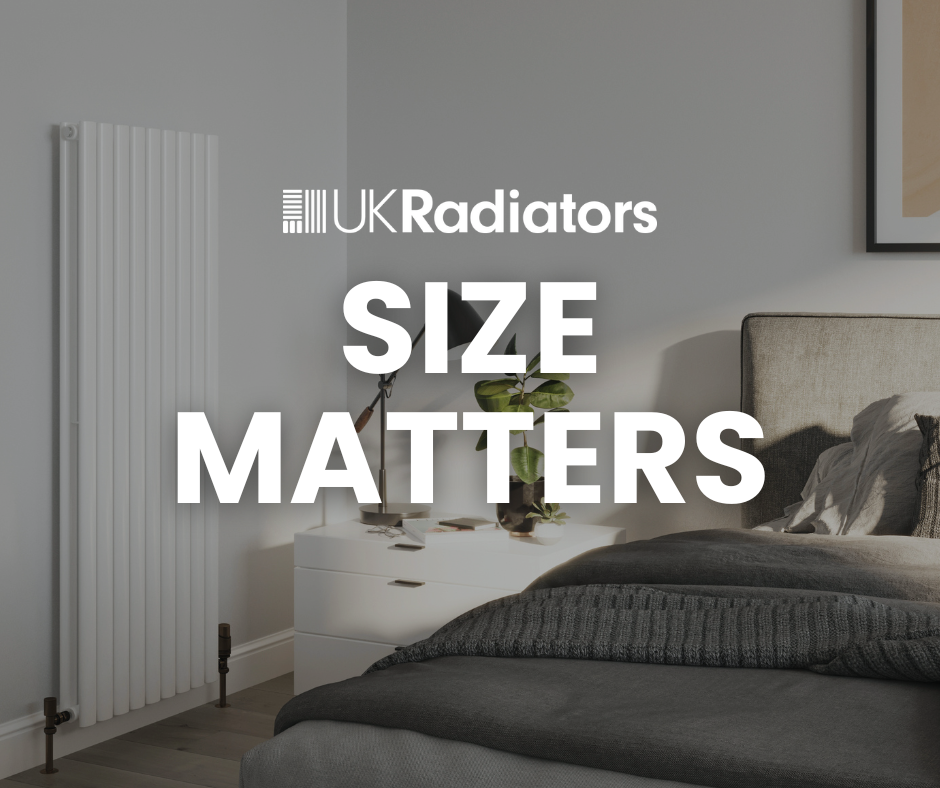
Boost Your Radiator's Efficiency and Save on Heating Costs
Radiator Sizing
When it comes to radiator sizing for efficiency and saving on heating costs, we are less focused on the height and width and more focused on the heat output of the radiator, which changes depending on the material and construction. In order to size a radiator, there are two key steps
- Knowing what system you have and what the Delta heat output means
- The heat loss of the room based on your property construction and orientation
We cover this in more detail on this blog - Radiator Impact on System Sizing and Configuration Efficiency. But to do this quickly and efficiently, check out RADSIZER®: Our Cutting-Edge BTU Calculator
RADSIZER® will ask you more questions than the ones you may find on other websites but these questions are required so that it can show you radiators and the heat output based on your specific heating system in place.
System Configuration
It is commonly accepted that the lower the boiler flow temperature (the water inside the radiators) the more efficient and less costly the solution is to run. Again, this is covered in the Radiator Impact on System Sizing and Configuration Efficiency blog in more detail, but the key points are:
- Understanding the data on Radiators
- How to identify a good radiator listing from a bad one
- Radiator Sizing (covered above)
- Radiator material and Type (section below)
Getting this wrong and making a bad radiator choice will impact your system temperature. In the same way, getting this right will allow you to take advantage of both lower temperatures and other technology, like weather compensation modules, which adjust your boiler flow temperature based on the outside temperature. Again, RADSIZER® helps you get this right.
Radiator Material and Type
A very common misconception in the industry is that “the choice of radiator doesn’t matter so long as it is sized correctly”, but this couldn’t be further from the truth. It is quite a complex topic, but to keep this simple, what we want to get from our radiator is:
- A quick room heat up time so we don’t raise our boiler temperature to compensate for the radiator being slow to heat.
- Reducing the amount of stored energy in the radiator and water at the end of the heating period, which will only be released after our heating is turned off. While it is still heat energy, it is not being released at the time we need it to otherwise, it becomes wasted heat.
So once we have found radiators with the correct heat output to meet our room requirement, we should then compare the water content and the dry mass, the lower these are, the better our radiator will work for us. If you’d like to find out more information about the impact of radiator material on heating efficiency, check out our article to read all about the calculations and supporting scientific concepts - like the laws of thermodynamics. Those are the key points for choosing our radiator in the first instance, but once we have it, we have a bit more work to do.
Radiator Maintenance
Once the radiator is in place, the two focus points we have that specifically relate to the radiator are:
- Preventing rust and corrosion
- Managing the build-up of air
Both of these aspects can cause the radiator to have cold patches. Beyond that, these aspects can also impact boilers, reducing their functionality over time. If you don’t deal with these underlying issues, you will eventually have to raise the boiler temperature to get more heat which increases running costs. After a while, if left unchecked, the boiler will break sooner than it would have had these issues been resolved. You can find out more information on how to deal with rust and corrosion here. To manage the build-up of air, you can either:
Radiator Heating Controls
When it comes to radiator heating controls, there are both the direct heating controls attached (valve type) and the main boiler thermostat. Our RADSIZER® will tell you at the end of the journey which valve type you need based on the answers you gave, which you can try by clicking the button below or you can read our Ultimate Guide to Radiator Valves.
For valuable insights on optimising your heating bill, it's crucial to consider the placement of your main boiler thermostat within the chosen room. Beyond this, the other key factor is finding your desired room temperature. Often we set thermostats and then fiddle with them because we feel cold but, generally speaking, that is because we have not given the room enough time to heat up. For this issue, check out our blog - What Is The Ideal Temperature For Your Home? Explore our dedicated advice centre for a comprehensive collection of energy-saving tips, tricks, do's, dont’s, scientific insights, and debunked myths. Start your journey towards more efficient energy usage today!










